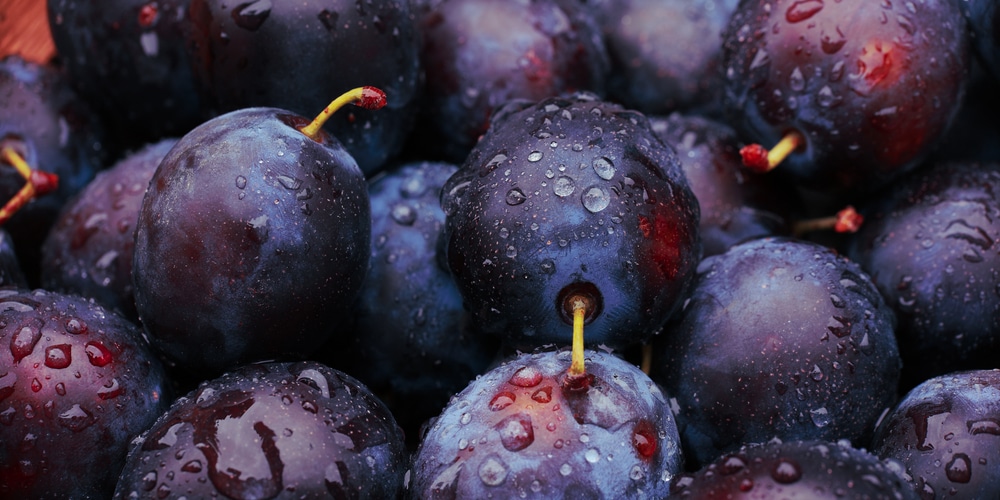Most of the days in Florida are sunny and humid. The weather starts getting warm in spring. Summer is long, starting in May and lasting through September. These days are also when the state receives the highest amount of rain.
Cold and dry days start in late October and last through early spring. Winter temperatures only drop to 60 degrees F in Florida. We all know that deciduous fruit trees, like plum trees, require a certain number of chill hours in the winter in order to bloom flowers in the spring. But, given the humid subtropical climate of Florida, can Floridians still get to enjoy the sweet and juicy plums in the summer?
Do plum trees grow in Florida?
November, December, January, and February are the coldest and driest months in Florida. But still, during these months, it’s sunny during the day and it only gets cooler at night.
The state of Florida only gets 100 to 500 chill hours during the winter or cold months. This is the amount of time where temperatures go below 45 degrees F in Florida. If you want to plant fruit trees in Florida, you have to choose “low chill” fruit tree varieties. This way, the fruit tree will still get to bloom in spring because it was able to get the number of chill hours it requires.
This further means that in order for you to enjoy sweet plums in Florida, you have to choose tropical “low chill” plum varieties.
Plum trees love full sun, and this is not a problem in Florida. The only problem is the “chill hours,” because winter in Florida is mild. American and European plum trees might not be the best plum varieties you should plant in your garden if you live in Florida.
European plum trees require 7 to 1,100 chilling hours. What more for American plums which grow best in USDA hardiness zone 3? Florida can’t provide these chill hours. The only option you have now is the Japanese plum trees, which are more suitable in regions with warmer climates.
You don’t have to worry about selecting which Japanese plum trees to plant because the University of Florida has already produced plum tree varieties that only require a minimum amount of chill hours in order to produce flowers and thus fruit in the summer.
Plum cultivars that grow well in Florida
We have now established the fact that you can grow plums in Florida. We’ll now provide you with a list of plum cultivars that grow well in the state and how you can grow each of them in your garden.
The plum cultivars that were developed by the University of Florida have the prefix “gulf” and are all Japanese plum trees that can tolerate mild winters with low chill hours. The fruits are smaller than average plums, which are only 1 to 2 inches in diameter.
The planting time for young trees is from January to February. These plums are not self-fertile, so you need to have another different gulf plum tree in your neighborhood for your gulf plum tree to bear fruit. The harvesting time for ripened gulf plums is from May to June.
1. Gulfbeauty
The Gulf beauty plum tree only needs 225 chilling hours. It will grow well in Orlando, where the region receives 200 to 300 chill hours in the winter. The Gulfbeauty plum tree produces fruits that have dark reddish-purple skin. Just to warn you, the skin tastes sour.
But you won’t be disappointed with the yellow-colored flesh because it tastes sweet. What’s great about this plum tree variety is that it’s very resistant to bacterial canker and moderately resistant to plum leaf scald.
2. Gulfblaze
The Gulf Blaze plum tree is very similar to the Gulf Beauty plum tree. They only differ in terms of the number of chill hours required. Gulfblaze requires 250 chilling hours.
This particular gulf series plum tree will grow best in Ocala, where the region receives 300 to 400 chilling hours. The fruit looks like the fruit of Gulf Beauty. It can appear as a dark red or purple. The flesh is orange and has a sweet taste. Gulfblaze is also resistant to bacterial canker and plum leaf scald.
3. Gulfrose
The chilling requirement for the Gulf Rose plum tree is 275 hours. This plum tree bears a distinct fruit that has dark reddish-purple skin and blood-red flesh. The fruit also smells aromatic.
You might want to avoid the skin because it tastes sour. Go for the flesh because it tastes sweet. As compared to other blood plums, Gulf Rose plums don’t have a bitter aftertaste. The Gulf Rose plum tree is resistant to bacterial canker but is less tolerant to plum leaf scald than the Gulfblaze.
Do Plum Trees Grow in Florida?: Conclusion
There are two other gulf series plum trees that were not released by the University of Florida because of their susceptibility to bacterial canker and leaf scald.
They are Gulfruby and Gulfgold. You can also grow other Japanese plum trees as long as Florida can provide them with their chilling requirements. Regions in the northern part of Florida have the most chill hours compared to those in the south.
It is worth noting that chill hours are not the only growth requirements for plum trees. You also need to know the soil, light, and nutrient requirements of the plum tree, so that you can be sure that it will really grow and bear fruit in the summer.

